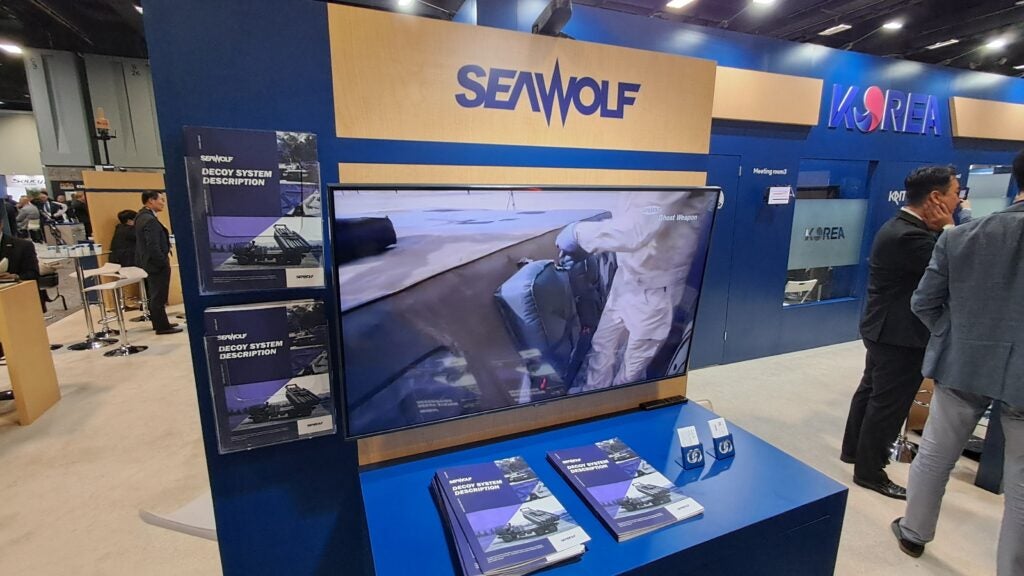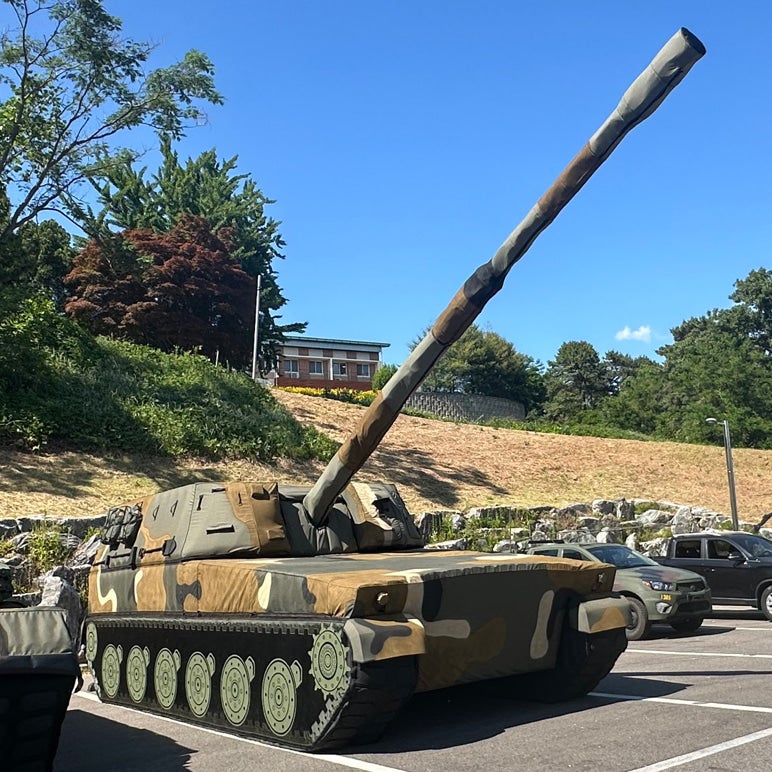AUSA 2024: Seawolf Offers Decoy Tanks, Aircraft, and Artillery
2,500 years ago, Sun Tzu observed that “all warfare is based on deception”. And, as AUSA 2024 shows, militaries today are still looking for new ways to deceive the enemy. One company seeking to assist with this task is South Korean company Seawolf .
Since, 1991, the company has mainly focused on life jackets. However, more recently, Seawolf has ventured into defense with inflatable decoys. Inflatable mockup versions of the HIMARS Multiple Launch Rocket System, the F35 Joint Strike Fighter, and a variety of other military systems are all manufactured by the company. “We already tested with the Korean Army,” Seawolf Assistant Manager Junyeong An told Overt Defense at AUSA 2024. “Next year, the Korean Army is going to operate 250 units of our decoy system”.

Inflatable decoys aren’t a new technology; they’ve been in use for decades. During Operation Fortitude in 1943-1944, the Allies famously created the fictitious “First US Army Group” to fool the Germans into believing they planned to land in Pas de Calais rather than Normandy. Together with fake radio traffic, double agents, and a variety of other techniques, the Allies deployed huge amount of inflatable decoy tanks. Similar dummy tanks had also been used in North Africa in 1941-1943. Most recently the use of decoys has been seen again during the war in Ukraine.

However, Seawolf’s decoys have a lot more tech in them than their World War II forebearers. Most notably, they include technology which makes them detectable through non-visual methods. Infrared and radar sensors should all pick up the decoy, just as they would a real tank. The systems are also relatively light; only 172kg for the K1A2 tank decoy and 163 kg for the K9 155mm Howitzer Decoy. According to Junyeong An:
“The weight is a little bit below our expectations. It was 200 to 500 kilograms [for the average system] so four people may be able to carry it. Also, there is a really lightweight frame under the product so it can be moved with wireless control. We use an electric motor system so it can be driven up to 15 kilometers.”

In addition to allowing the decoys to drive, the electric motors can power additional types of movement that make the deception more convincing. On the HIMARS model, the launch pod can swivel around while the K9 can depress its gun from 70 to 0 degrees. Depending on the model, assembly and disassembly can take from 10 to 30 minutes.
The decoys are also useful in contexts like AI training Seawolf explained:
“The [decoy system’s] main purpose is, for now, AI-training. Many countries and companies are developing AI-drone and UAV systems and they train with the decoy system for their AI system. So, we currently are focusing on AI-training because AI needs to learn about this system, our weapons and the enemy’s weapons.”
As Seawolf demonstrates, even an age-old concept like decoy vehicles can be reimagined for the modern era.

